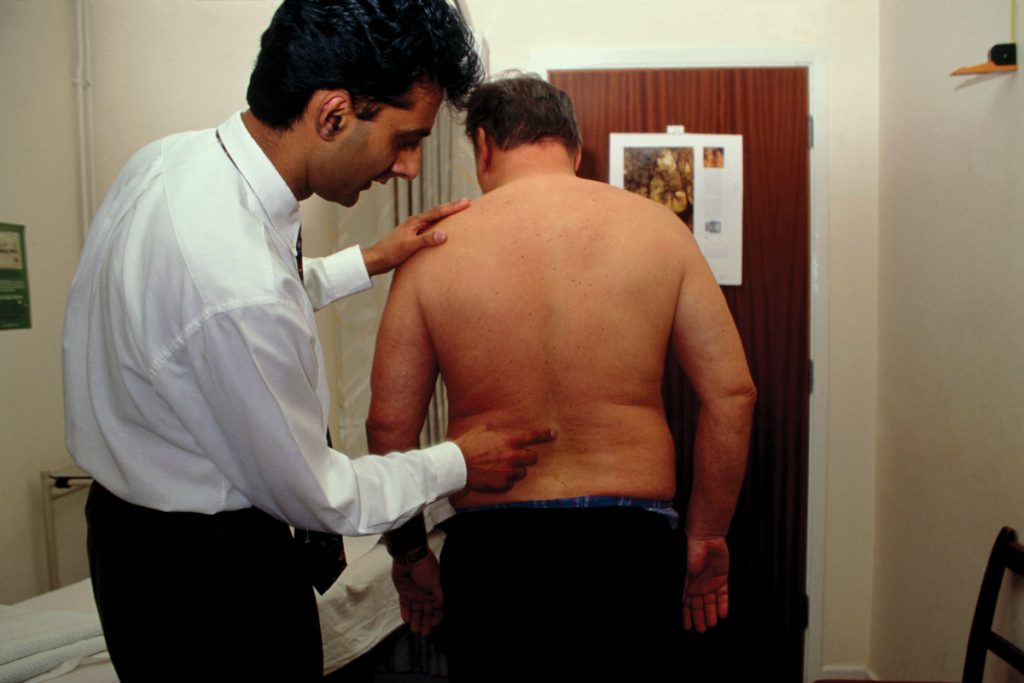
The third in our new series of abridged chapters from the recently expanded and updated Symptom Sorter (sixth edition), which gives a grassroots analysis of common presentations in primary care
The GP overview
Doctors may disagree – with patients and among themselves – about where exactly the ‘loin’ is. For the purposes of this chapter, it is the area between the lower ribs and the pelvis, anteriorly or posteriorly. Loin pain is a common acute or subacute presentation, with patients tending to assume that the symptom represents a renal problem. Occasionally, they are correct. But a musculoskeletal aetiology is much more likely, and there are other possible causes to trip up the unwary.
Differential diagnosis
Common
• Acute musculoskeletal pain.
• Renal or ureteric stone.
• Acute pyelonephritis.
• Rib pain.
• Shingles.
Occasional
• Gynaecological causes such as ectopic pregnancy, PID, ruptured or torted ovarian cyst.
• Gastrointestinal causes such as appendicitis, biliary colic.
• Other urological causes in men such as epididymitis and prostatitis.
• Pelvi-ureteric obstruction.
• Radicular pain (possibly from osteoarthritis or disc prolapse).
Rare
• Leaking abdominal aortic aneurysm.
• Retroperitoneal fibrosis.
• Renal infarction.
• Renal tumour (either directly or from a consequent blood clot in the ureter).
• Acute papillary necrosis.
• Factitious (addicts might report loin pain if they are seeking opioids).
• Idiopathic loin pain haematuria syndrome.
Possible investigations
Likely
Urinalysis, MSU.
Possible
U&E, sieving urine, renal imaging (non-contrast helical CT is the investigation of choice in suspected renal/ureteric colic; depending on how acute the presentation is, and on local guidelines, abdominal X-ray or ultrasound may be helpful. Renal imaging may be required in acute pyelonephritis, possible renal tumour or pelvi-ureteric obstruction).
Small print
A metabolic screen may be needed (usually performed in secondary care); other hospital-based investigations might be urological, gynaecological or gastrointestinal.
Top tips
• Remember that many patients fear kidney problems. They may value reassurance that all is well renally as much as your positive diagnosis of musculoskeletal pain.
• Take care during busy telephone triaging sessions – be sure to check that the apparently simple cystitis isn’t actually a developing case of acute pyelonephritis.
• The absence of microscopic haematuria does not rule out renal or ureteric colic but should certainly prompt a consideration of alternative diagnoses.
• Patients with genuine renal or ureteric colic tend to writhe about in pain.
• Think of shingles, particularly in elderly patients with an otherwise unexplained short history of burning loin pain, and warn them of the possibility of a rash developing – the pain may precede the skin manifestations by a few days.
Red flags
• Beware of a first diagnosis of renal or ureteric colic (especially left sided) in older men – a leaking abdominal aortic aneurysm can cause similar symptoms.
• Some cases of renal or ureteric colic can be managed – at least initially – in the community. But those with fever, prolonged or unresponsive pain, or known renal compromise should be admitted.
• Acute pyelonephritis in men and children, and recurrent episodes in women, require investigation to exclude any underlying urological problem.
• Be cautious about using strong analgesics for possible renal or ureteric colic in patients with histories of drug addiction – this used to be a favoured way to engineer a free opioid fix, although the increasing use of diclofenac as the urgent treatment of choice has reduced this problem.
Dr Keith Hopcroft is Pulse’s clinical adviser and a GP in Basildon, Essex
Pulse July survey
Take our July 2025 survey to potentially win £1.000 worth of tokens














Go down a couple of notches and you get ”pain in the butt”
Is this the same Dr/ Keith Hopcroft from way back?